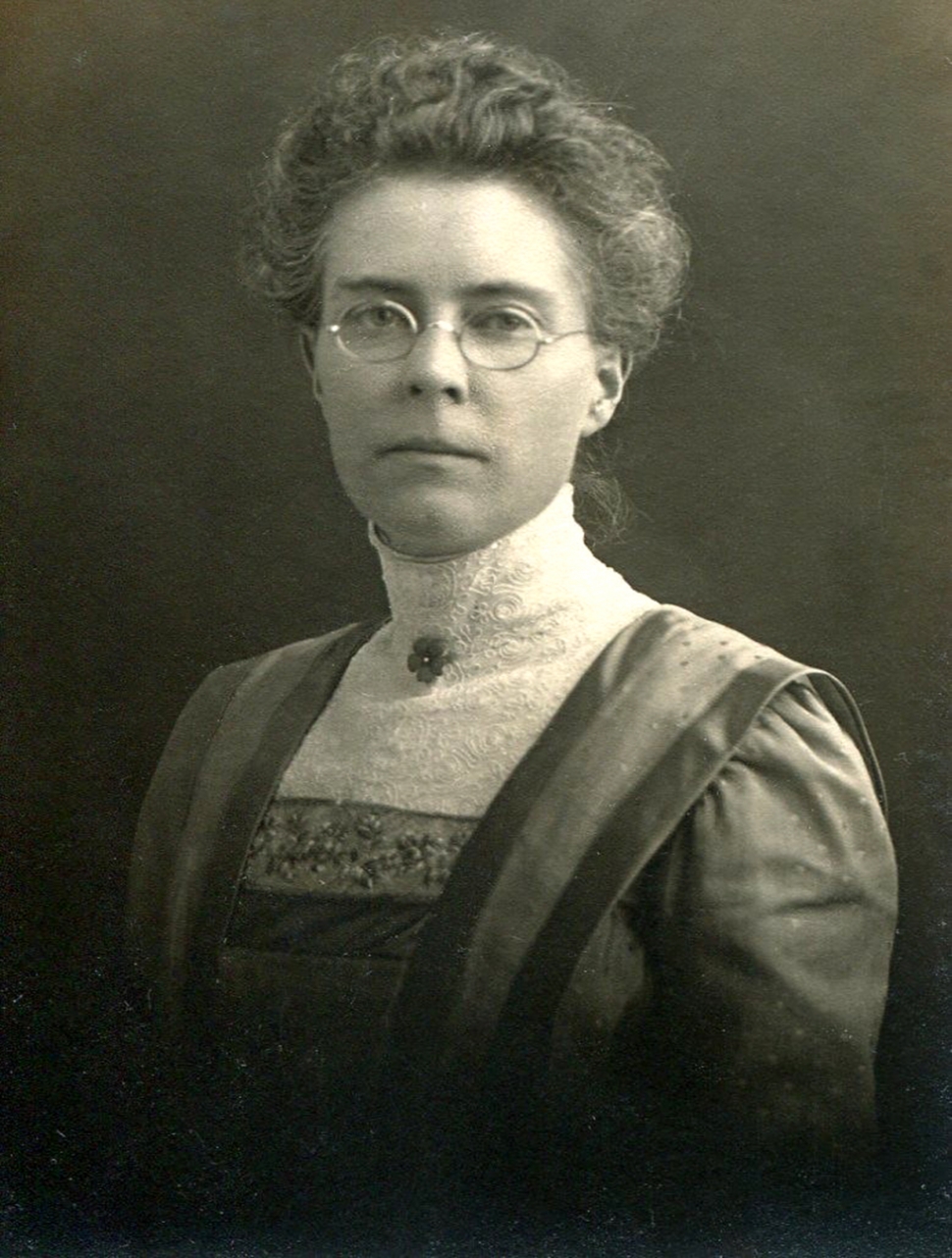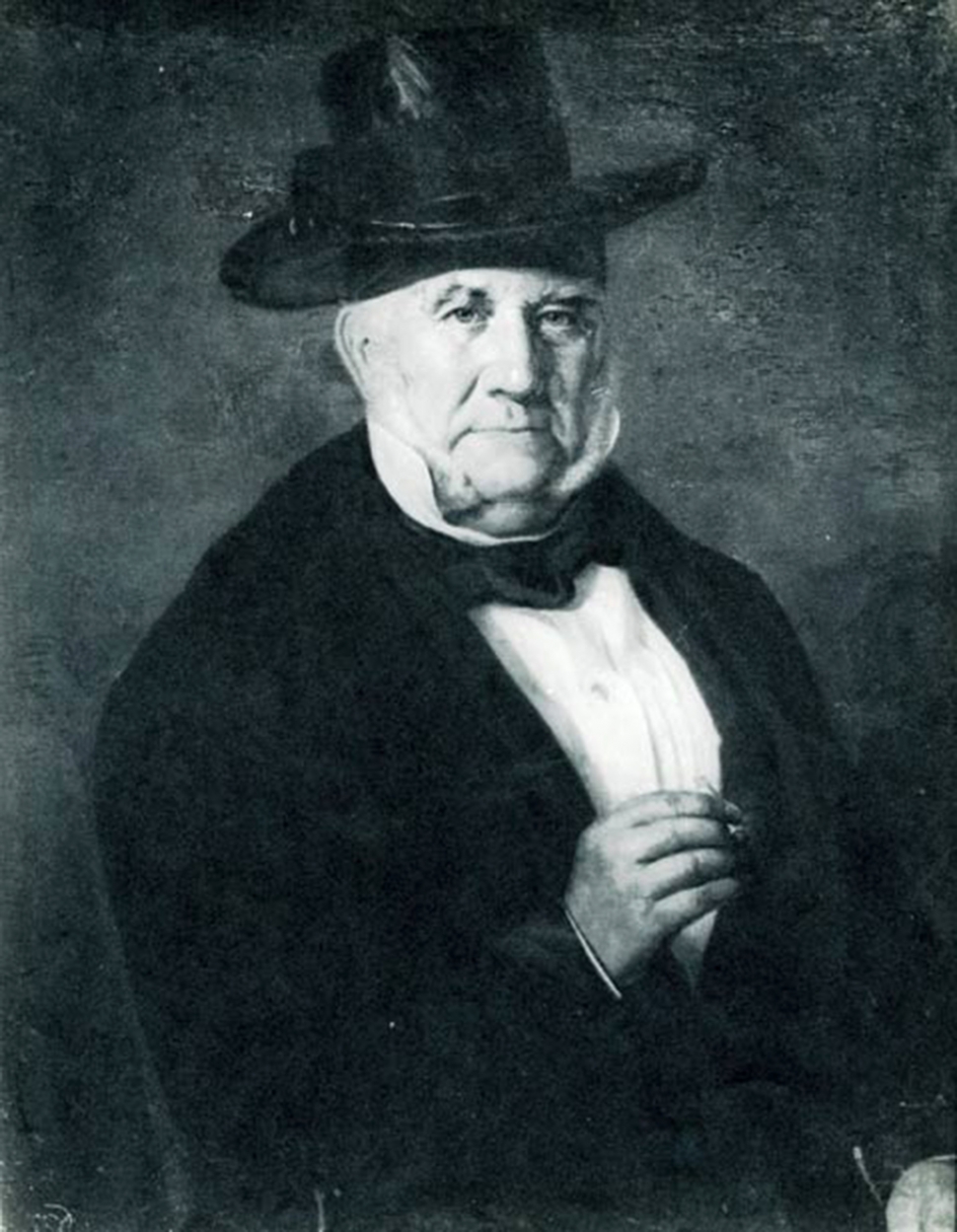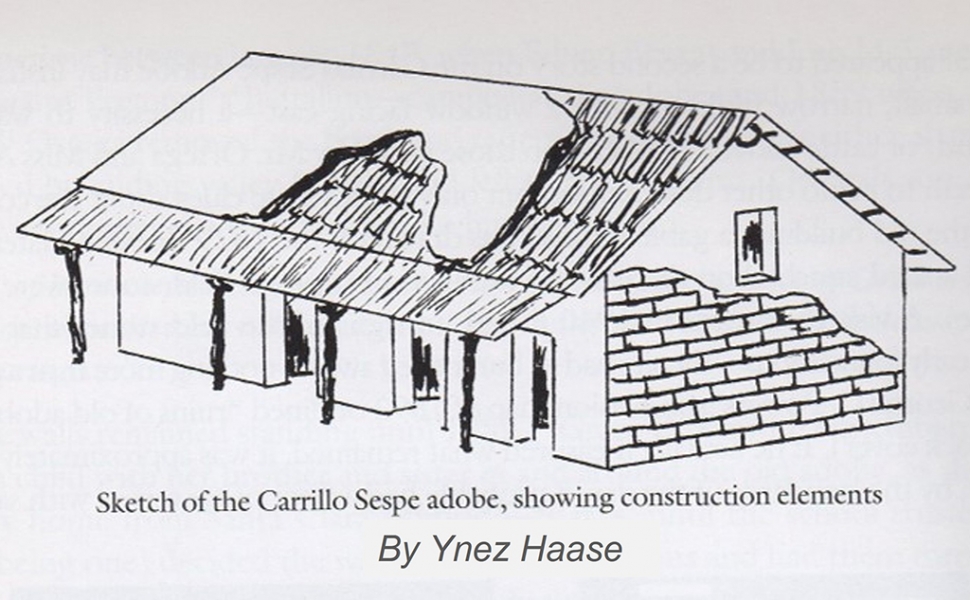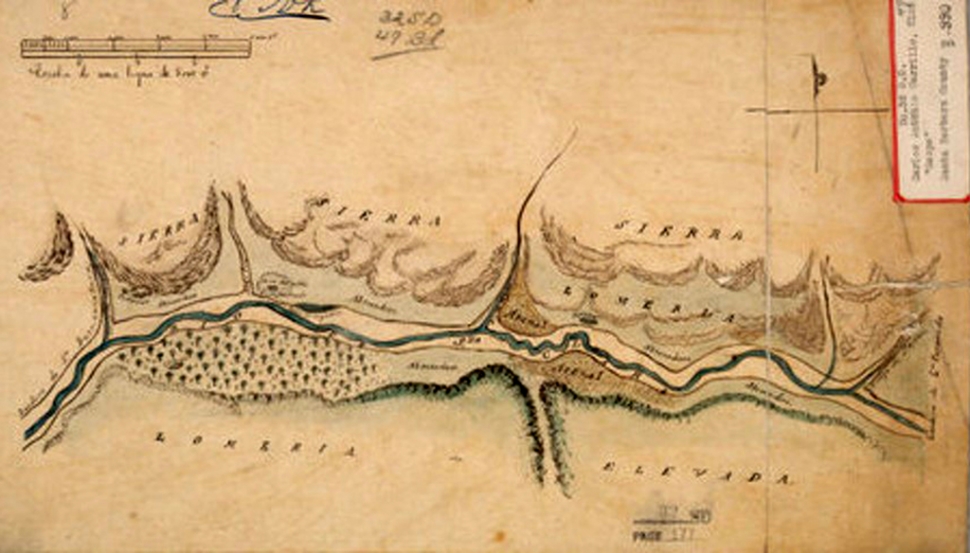|
Carrillo & Rancho Sespe
By Anonymous — Wednesday, July 14th, 2021
 Grace Atmore  Don Carlos Antonio de Jesus Carrillo  Depiction of Adobe by Ynez Haase.  Map of Rancho Sespe Land Grant. Courtesy Fillmore History Museum Prior to 1833, the area which would become Fillmore and Bardsdale was under the governance of the Mission San Buenaventura. Few Europeans lived in the area and it was primarily used for cattle grazing. This changed in 1833. Mexico had gained its independence from Spain some years earlier and in 1833 the Mexican Government passed the Secularization Act which cancelled vast land concessions which had been given to the various Missions. Instead land was granted to individuals. To apply for a land grant, one had to make a request in writing to the area governor, describing the land he was interested in and giving its dimensions and boundaries. This would be accompanied by a map or diseño, illustrating what was requested in the petition. If approved, the governor would issue a formal declaration and the property would be surveyed and the boundaries established. The recipient then was required to build a house on the land; stock it with cattle; plant some portion in vines, fruit trees or grain. Don Carlos Antonio de Jesus Carrillo was the eldest of seven children born to José Raymundo Carrillo and Tomaso Lugo. They were married at the Carmel Mission in 1781 in a ceremony presided at by Junipero Serra. The Carrillos were a distinguished family, their line including an Archbishop of Toledo and a viceroy of Mexico. In 1829, prior to the Secularization Act, Don Carlos petitioned the Mexican government for Rancho Sespe. He already had extensive holding in what would become Santa Barbara and Ventura Counties, including Santa Rosa Island. Because he had a large extended family (Ten children and at least 50 grandchildren) he needed additional lands to support them. His petition he requested land that ran “from an arroyo called Piru which at its mouth unites with that of Camulos, to the hill which faces another arroyo named Mupu.” This was basically from the Piru River to Santa Paula Creek. He received his property in 1833 naming it Rancho Sespe. On the deed it specified 6 square. leagues or 54 square. miles or 34,560 acres. Two copies of the deed were filed, and this is what sowed the seeds of later disputes and even murder. On the second copy there was an erasure and instead of 6 square leagues it read 2 square leagues. This opened the door for later settlers to claim land which Don Carlos, and later owner, T. Wallace More, believed they owned. That dispute is another chapter in the story of Rancho Sespe. For further information go to https://www.fillmorehistoricalmuseum.org/rancho-sespe. The grant extended from Santa Paula creek on the west to Piru Creek on the east, approximately 17 miles. The ranch was centered about where the Sespe River meets the Santa Clara River. Three years after Don Carlos and his family received the ranch it was supporting 3,000 head of cattle, three or four droves of horses and mules, and approximately 400 sheep. An adobe was built as was required by the grant, but the Carrillo family did not live on Rancho Sespe. They were residents of Santa Barbara. Carrillo’s Mayordomo, Prudencio Ayala, who was in charge of the Rancho may have lived there. The Carrillos may have stayed there when they came to the Rancho for the “round-up” of the cattle. At that time there could have been as many as fifty family members and additional servants and guests. The adobe as it has been described could not have housed that many individuals. Grace Atmore, who died in 1943, remembered playing at the ruins of the adobe on her way home from the Santa Clara School. She remembered it as being rectangular with six or seven rooms. Eventually the school trustees felt the structure unsafe and had it torn down. According to some historians the adobe was just north of the Santa Clara River, west of the mouth of the Sespe and close to the historical sycamore tree on Hwy 126. Other writers of local history located the adobe just south of the point where the Sespe meets the Santa Clara. 1848 saw California becoming a territory of the United States. The Treaty of Guadalupe Hidalgo guaranteed the property ownership of the existing settlers, but the Federal government soon challenged the legal status of every Spanish/Mexican land grant. A Board of Commissioners was created to review the legal proof each claimant was required to submit. Don Carlos Carrillo filed his proof shortly before his death in 1852. His wife, Josefa, was his primary heir, but she died in 1853. In April of 1853, the Board of Commissioners ruled that the land grant was valid and encompassed six square leagues. This would soon be challenged but by then the Carrillo family would not be in the picture. In the summer of 1853, the probate court of Santa Barbara ordered that the ranch be sold at public auction with the proceeds to be divided among the Carrillo heirs. The successful bidders were three brothers, T. Wallace, Henry and Alexander More, who bought it for $17,500, a little over $600,000 in today’s dollars. After twenty years, this ended the Carrillo involvement in Rancho Sespe. Their son was probably the most well-known offspring, the actor Leo Carrillo. |
